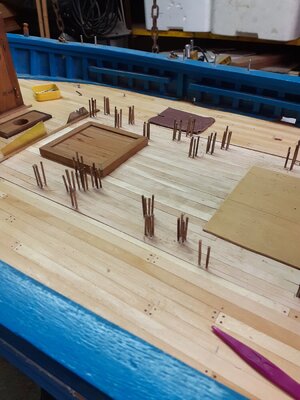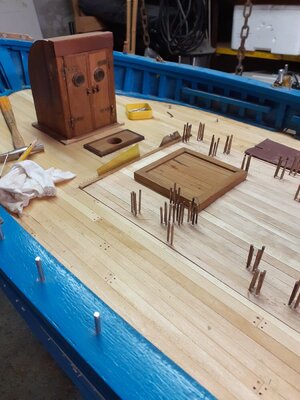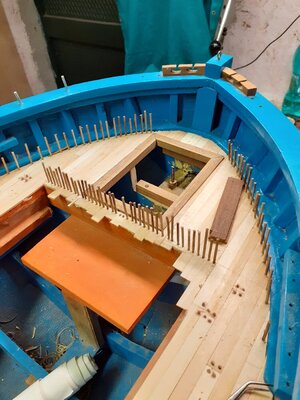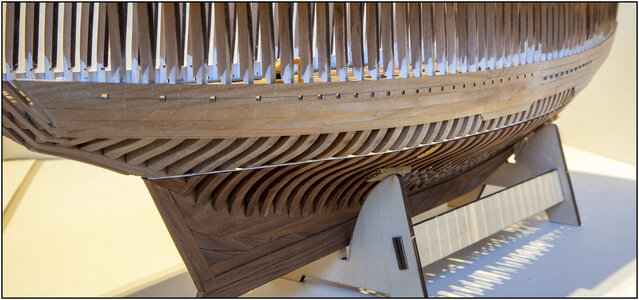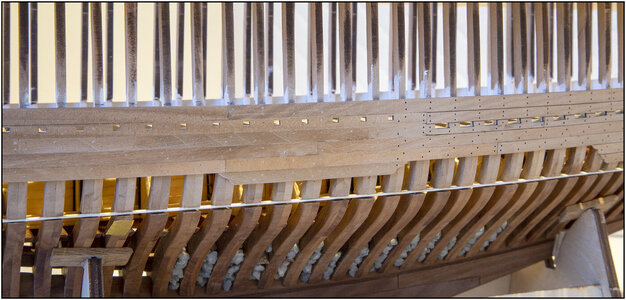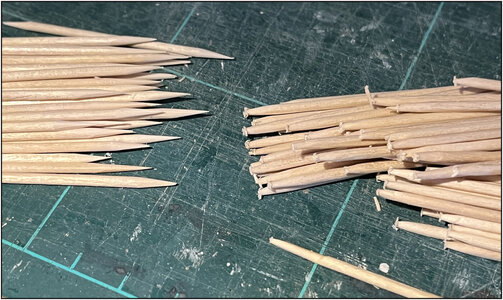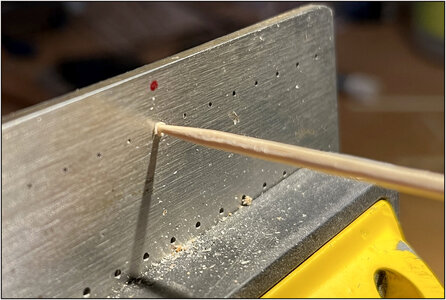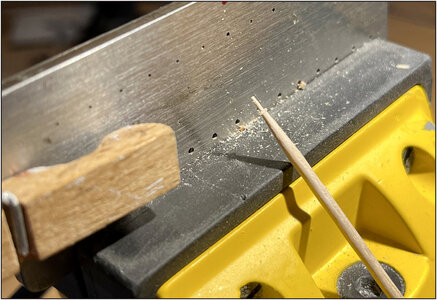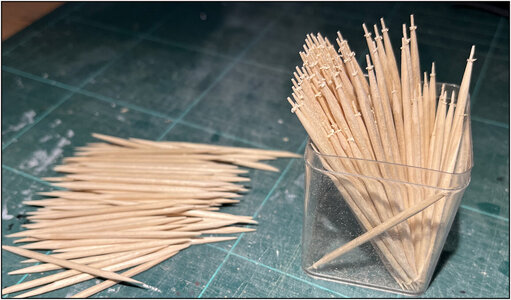Hi Mark,Peter, I don't know whether I'm more impressed by the accracy of the indentations you've created in preparation for the drilling, or by the fact that you counted all of them
That counting was more a matter of calculating:
5 rows of planks with 2 holes each on all 56 frames = 560.
Then 3 extra small planks over 5 frames = 30.
With a few more small rows on the bow filler piece.
I can't make it any easier.
Last edited:




